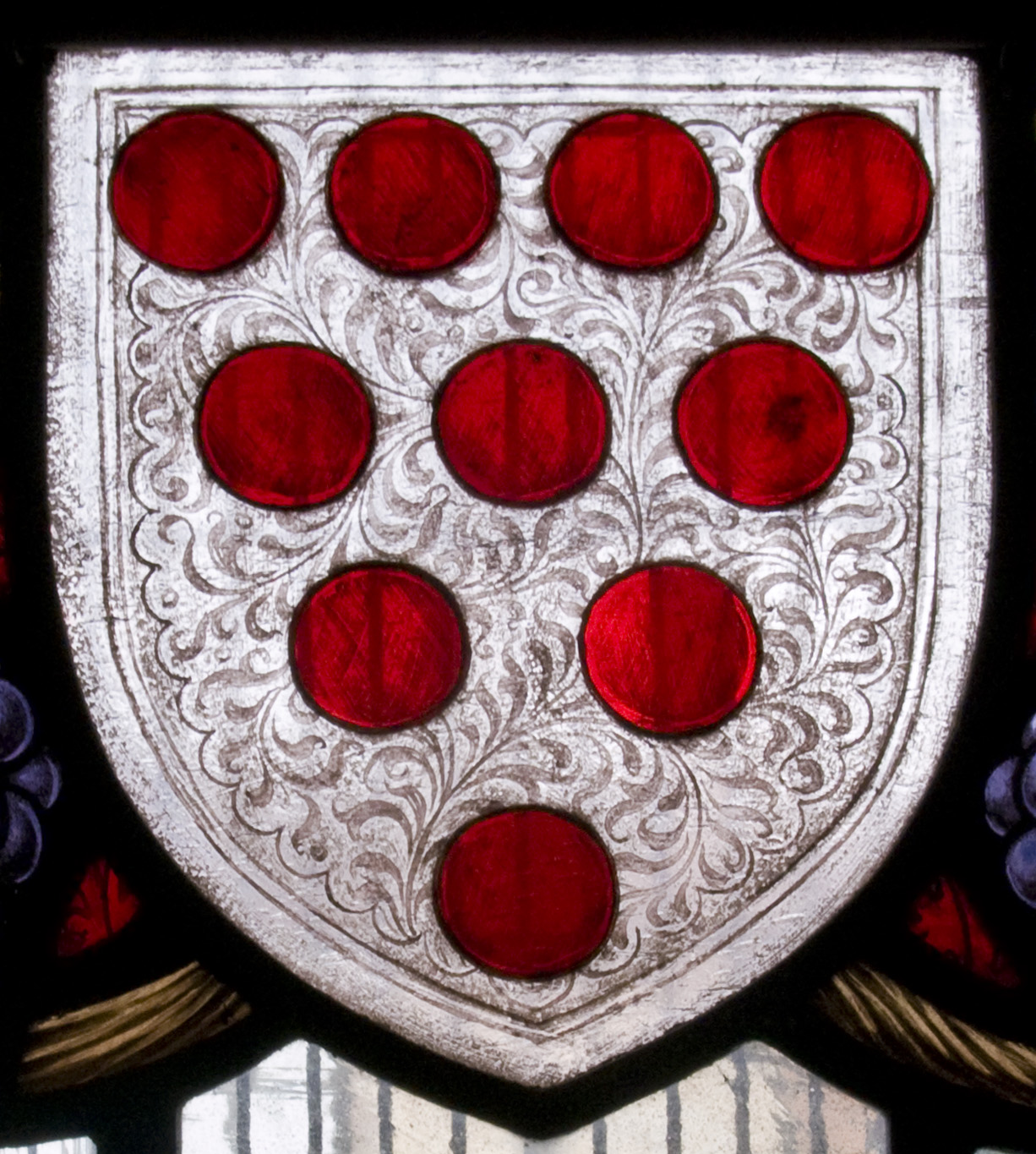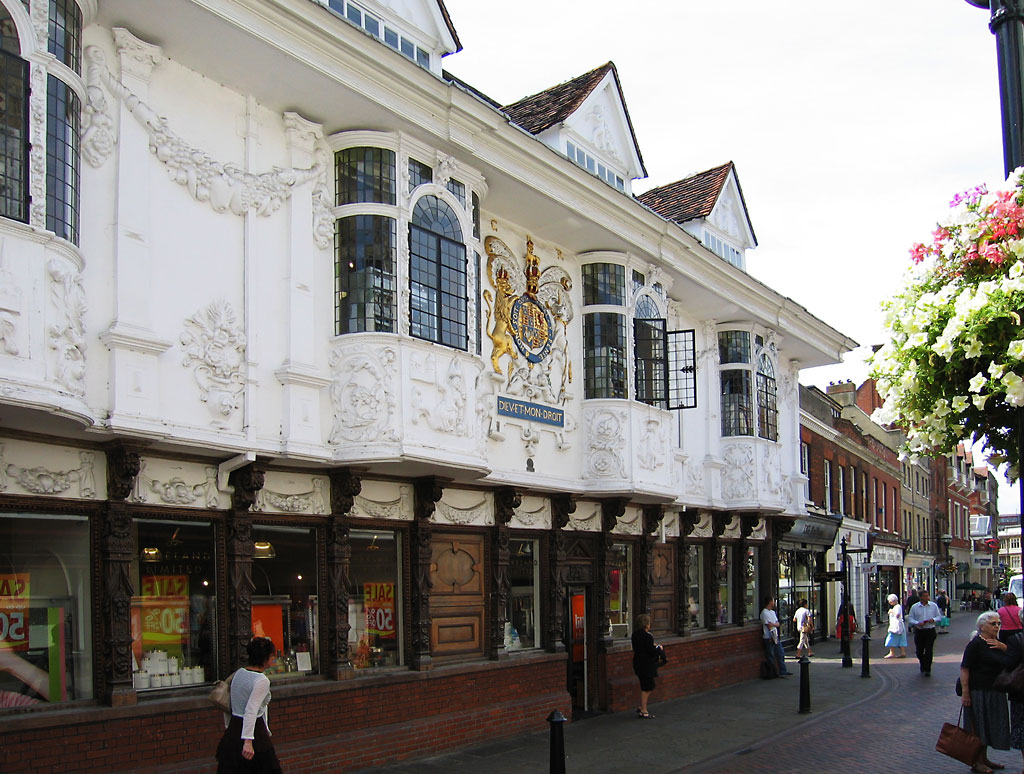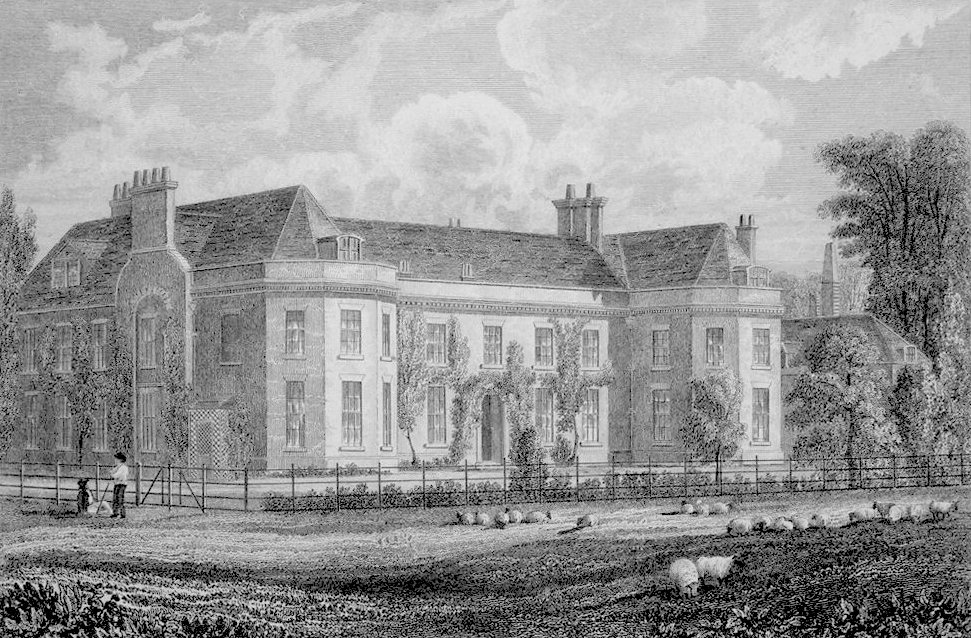|
Flushwork
In architecture, flushwork is decorative masonry work which combines on the same flat plane flint and ashlar stone. If the stone projects from a flat flint wall then the term is proudwork, as the stone stands "proud" rather than being "flush" with the wall. Flushworked buildings belong to the Perpendicular style of English Gothic architecture. It is characteristic of the external walls of medieval buildings – most of the survivors being churches – in parts of Southern England and especially East Anglia. Flushwork begins in the early 14th century, but the peak period was during the wool boom between about 1450 and the English Reformation of the 1520s, when church building virtually ceased and brick construction became more fashionable. The technique continued in occasional use, and saw a major revival in the 19th century, and is still sometimes used in a modern style today, as well as for the restoration or extension of older buildings. Technique Flushwork, and flint a ... [...More Info...] [...Related Items...] OR: [Wikipedia] [Google] [Baidu] |
Diapering
Diaper is any of a wide range of decorative patterns used in a variety of works of art, such as stained glass, heraldic shields, architecture, and silverwork. Its chief use is in the enlivening of plain surfaces. Etymology For the full etymology, see "". The Oxford dictionary gives the Greek ''dia'' for "cross" as in "diamond" or "diagonal"; and ''aspros'', Greek for "white". A white diamond or white cloth is used on the diagonal, hence the diagonal lattice or reticulation in patterning. In art In architecture and other decorative arts, diaper is applied as a decorative treatment of a surface with a repeat pattern of squares ( check (pattern), chequers), rectangles, or lozenges. Diaper was particularly used in medieval stained glass to increase the vividness of a coloured pane, for example the field in a shield of arms. A stone wall may be decorated with such a pattern sculpted in relief; in brickwork the effect may be achieved by using bricks of different colours, or by all ... [...More Info...] [...Related Items...] OR: [Wikipedia] [Google] [Baidu] |
Wool Church
A wool church is an English church financed primarily by donations from rich merchants and farmers who had benefitted from the medieval wool trade, hoping to ensure a place in heaven due to their largesse. Wool churches are common in the Cotswolds and in the " wool towns" of upland East Anglia, where enormous profits from the wool business spurred construction of ever-grander edifices. A wool church was often built to replace a smaller or less imposing place of worship, in order to reflect the growing prosperity of the community in which it was situated. Many such building projects were undertaken by a small number of families in each village or town, who used the new church building to display their own wealth, status and faith. The building of wool churches largely ended with the English Reformation and the simultaneous decline of the wool trade between 1525 and 1600. Notable wool churches Long Melford The Holy Trinity Church, Long Melford, Suffolk, is widely regarded as one ... [...More Info...] [...Related Items...] OR: [Wikipedia] [Google] [Baidu] |
Norwich Cathedral
Norwich Cathedral, formally the Cathedral Church of the Holy and Undivided Trinity, is a Church of England cathedral in the city of Norwich, Norfolk, England. The cathedral is the seat of the bishop of Norwich and the mother church of the diocese of Norwich. It is administered by its dean and chapter, and there are daily Church of England services. It is a Grade I listed building. Construction of the building was begun in 1096 at the behest of the first bishop of Norwich, Herbert de Losinga. When the crossing tower was the last piece of the Norman cathedral to be completed; measuring and wide, the cathedral was the largest building in East Anglia. The cathedral close occupied a tenth of the total area of the medieval city. The present structure of Norwich Cathedral is primarily Norman, being made of flint and mortar and faced with a cream-coloured Caen limestone. The cathedral was damaged during the riots of 1272; repairs were completed in 1278. The cloisters, begun ... [...More Info...] [...Related Items...] OR: [Wikipedia] [Google] [Baidu] |
Ipswich
Ipswich () is a port town and Borough status in the United Kingdom, borough in Suffolk, England. It is the county town, and largest in Suffolk, followed by Lowestoft and Bury St Edmunds, and the third-largest population centre in East Anglia, after Peterborough and Norwich. It is northeast of London and in 2011 had a population of 144,957. The Ipswich built-up area is the fourth-largest in the East of England and the 42nd-largest in England and Wales. It includes the towns and villages of Kesgrave, Woodbridge, Suffolk, Woodbridge, Bramford and Martlesham Heath. Ipswich was first recorded during the medieval period as ''Gippeswic'', the town has also been recorded as ''Gyppewicus'' and ''Yppswyche''. It has been continuously inhabited since the Anglo-Saxon settlement of Britain, Saxon period, and is believed to be one of the Oldest town in Britain, oldest towns in the United Kingdom.Hills, Catherine"England's Oldest Town" Retrieved 2 August 2015. The settlement was of great eco ... [...More Info...] [...Related Items...] OR: [Wikipedia] [Google] [Baidu] |
St Mary-le-Tower
Ipswich Minster, previously known as St Mary-le-Tower, is the civic church of Ipswich, Suffolk, England and a Grade II* listed building. It was in the churchyard of St Mary that the town charter of Ipswich was written in 1200. History Although medieval, the church mostly dates from 1860 to 1870, when it was rebuilt by Richard Phipson. Rebuilding was funded by George Bacon, banker and philanthropist. The church, then known as St Mary-le-Tower, is mentioned in the Domesday Book, demonstrating that the site has been occupied by a church since at least 1086. Redesignation as a Minster On 19 January 2025, the church known as St Mary-le-Tower, was redesignated as Ipswich Minster in recognition of its increasingly important role in serving the community of Ipswich. Memorials The church contains a memorial brass, on a chancel pier, to H.A. Douglas-Hamilton, vicar from 1915 to 1925. There are also four brasses in the chancel floor. Organ The church has a large three-manual pipe o ... [...More Info...] [...Related Items...] OR: [Wikipedia] [Google] [Baidu] |
Gipping
Gipping is a village and civil parishes in England, civil parish in the Mid Suffolk district of Suffolk in eastern England. Located around three miles north north-east of Stowmarket, in 2005 its population was 80. At the 2011 Census the population remained less than 100 and was included in the civil parish of Old Newton with Dagworth. The parish contains Great Gipping Wood, an ancient woodland and Site of Special Scientific Interest, SSSI, whilst the River Gipping runs through it. It shares a parish council with neighbouring Old Newton with Dagworth. Gipping Hall For many years the village was linked with the family descended from Walter Tirel, the cousin of William Rufus. Sir James Tyrrell who allegedly confessed to murdering the Princes in the Tower under Richard III and was executed by order of Henry VII in 1502 for treason. He built a chapel in the village in the 1470s, which is still there. References External links Old Newton with Dagworth and Gipping Parish Council< ... [...More Info...] [...Related Items...] OR: [Wikipedia] [Google] [Baidu] |
Norwich Guildhall
Norwich Guildhall is a municipal building on Gaol Hill in the city of Norwich, Norfolk, England. It is a Grade I listed building. History The guildhall was commissioned after Henry IV of England, King Henry IV awarded a charter to the City of Norwich giving it autonomy from the county of Norfolk. The building, which was quickly established as the new civic meeting place, was built between 1407 and 1413; a "great tree" was given by William Appleyard (MP), William Appleyard, the first Mayor of Norwich, for its construction. The roof of the Council Chamber collapsed in 1511 but restoration work did not begin until 1537. The Christian martyr, Thomas Bilney, was held in the dungeon (now the undercroft) before being burnt at the stake in August 1531. The clock, by John Moore & Sons of Clerkenwell, was a gift from Henry Woodcock, the mayor, in April 1850 and a large porch, designed by Thomas Barry, the City Surveyor, was added to the south side of the building in 1861. George VI, Kin ... [...More Info...] [...Related Items...] OR: [Wikipedia] [Google] [Baidu] |
Wiltshire
Wiltshire (; abbreviated to Wilts) is a ceremonial county in South West England. It borders Gloucestershire to the north, Oxfordshire to the north-east, Berkshire to the east, Hampshire to the south-east, Dorset to the south, and Somerset to the west. The largest settlement is Swindon, and Trowbridge is the county town. The county has an area of and a population of 720,060. The county is mostly rural, and the centre and south-west are sparsely populated. After Swindon (183,638), the largest settlements are the city of Salisbury (41,820) and the towns of Chippenham (37,548) and Trowbridge (37,169). For local government purposes, the county comprises two unitary authority areas: Swindon and Wiltshire. Undulating chalk downlands characterize much of the county. In the east are Marlborough Downs, which contain Savernake Forest. To the south is the Vale of Pewsey, which separates the downs from Salisbury Plain in the centre of the county. The south-west is also downland, ... [...More Info...] [...Related Items...] OR: [Wikipedia] [Google] [Baidu] |
Greensand (geology)
Greensand or green sand is a sand or sandstone which has a greenish color. This term is specifically applied to shallow marine sediment that contains noticeable quantities of rounded greenish grains. These grains are called ''glauconies'' and consist of a mixture of mixed-layer clay minerals, such as smectite and glauconite. Greensand is also loosely applied to any glauconitic sediment. Formation Greensand forms in Anoxic sea water, anoxic Marine (ocean), marine environments that are rich in Organic matter, organic detritus and low in sedimentary input. Having accumulated in marine environments, greensands can be fossil-rich, such as in the late-Cretaceous deposits of New Jersey, United States. Occurrence Important exposures are known from both northern and western Europe, North America, Southeast Region, Brazil, southeastern Brazil and north Africa. Well known and important greensands are the Upper Greensand Formation, Upper and Lower Greensand Group, Lower Greensands of Englan ... [...More Info...] [...Related Items...] OR: [Wikipedia] [Google] [Baidu] |
Chalk
Chalk is a soft, white, porous, sedimentary carbonate rock. It is a form of limestone composed of the mineral calcite and originally formed deep under the sea by the compression of microscopic plankton that had settled to the sea floor. Chalk is common throughout Western Europe, where deposits underlie parts of France, and steep cliffs are often seen where they meet the sea in places such as the Dover cliffs on the Kent coast of the English Channel. Chalk is mined for use in industry, such as for quicklime, bricks and builder's putty, and in agriculture, for raising pH in soils with high acidity. It is also used for " blackboard chalk" for writing and drawing on various types of surfaces, although these can also be manufactured from other carbonate-based minerals, or gypsum. Description Chalk is a fine-textured, earthy type of limestone distinguished by its light colour, softness, and high porosity. It is composed mostly of tiny fragments of the calcite shells or sk ... [...More Info...] [...Related Items...] OR: [Wikipedia] [Google] [Baidu] |




